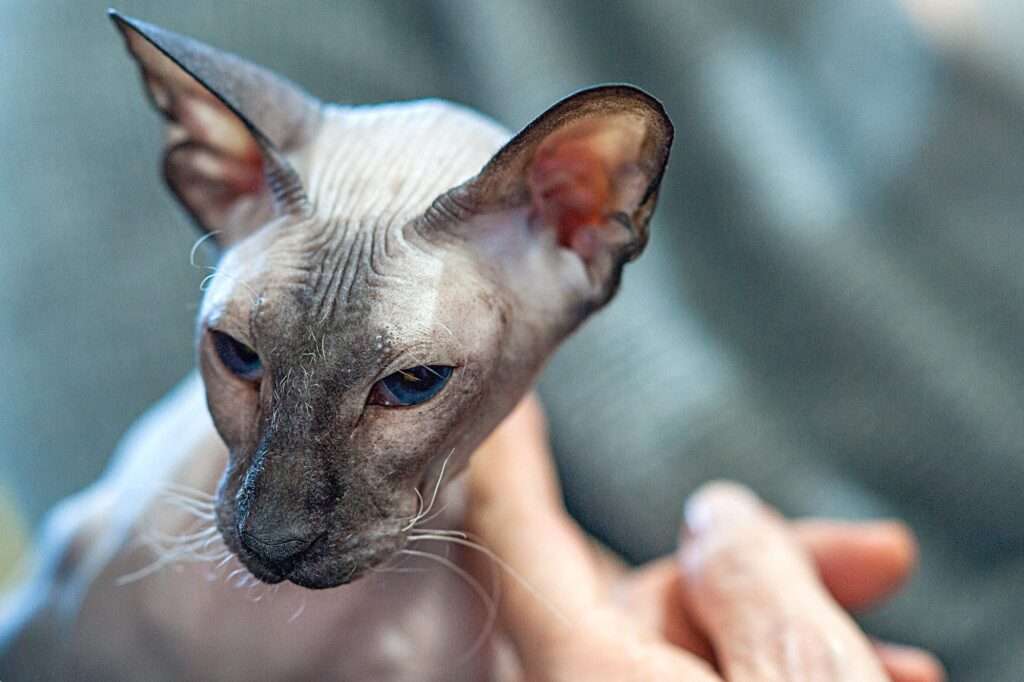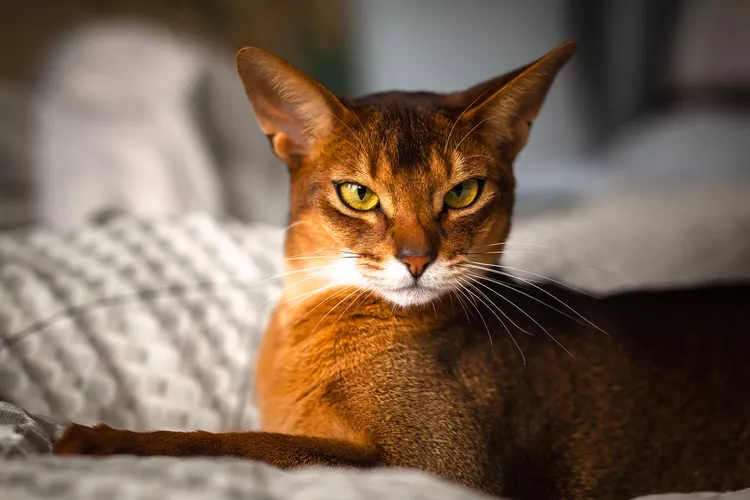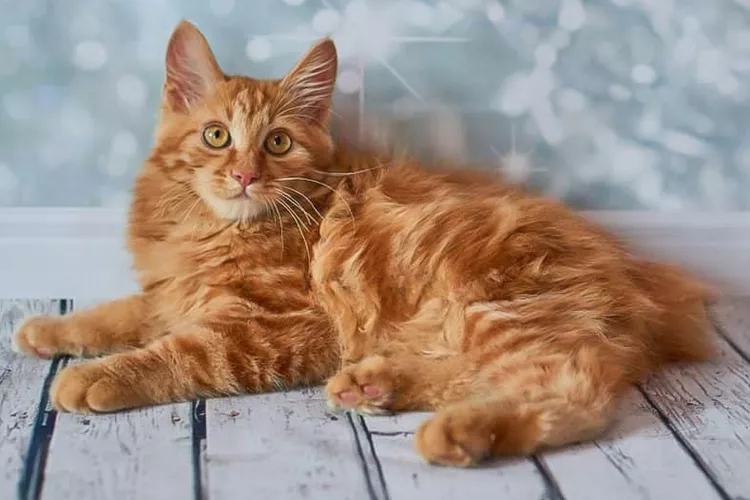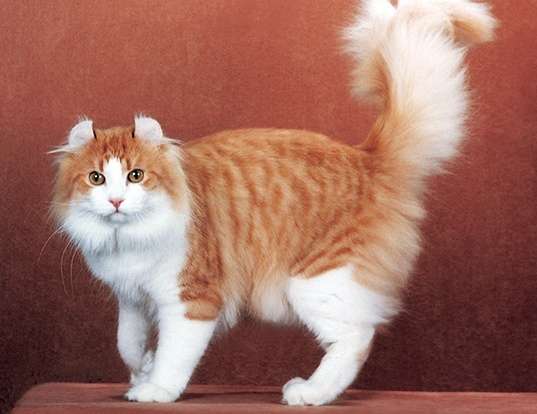
Description
Size: 6-12lbs.
Peterbalds are similar to Oriental Shorthairs. They might be born bald, velour, flocked, or with a straight coat due to a gene that causes hair loss. With the exception of straight coats, those who are born with hair might lose it with time. They have various markings and shades.
Breed members are lean and muscularly built. They have slender and long heads, almond-shaped eyes, a wedge-shaped nose, and broad, set-apart ears. They have wedge-shaped heads, oval feet, a long, whippy tail, and warm skin that resembles chamois.

Behavior
Activity Level: Moderate
Social needs: Need human or other animal’s company
Peterbalds are kind, warm-hearted cats. They are known for their dog-like loyalty to their favorite people, and they frequently follow you around the home to stay as close to you as possible. They are ideal for homes with kids and other pets because of their lively and inquisitive personalities and their calm and gentle temperament.
Peterbalds are smart and can be trained to walk on leashes, however, owners who choose this practice must use sunscreen if they intend to go outside to prevent unpleasant burns. They are also prone to cold, thus Peterbald fans love the trend of kitten sweaters.
Origin/History
In 1994, a Russian breeder by the name of Olga S. Mironova bred an Oriental shorthair cat with a Don Sphynx cat to create the Peterbald, a more recent cat breed. The resultant breed, which gained popularity among cat lovers in St. Petersburg, Russia, is today known as the Peterbald.
Care as a Pet
Most people agree that the Peterbald cat is a low-maintenance breed. The hairless variety benefit from the odd bath or wipe-down so that skin oils don’t build up and irritate, but prospective Peterbald owners won’t need to worry much about shedding. Due to their lack of fur, these cats should be kept inside where it is warmer.
Peterbalds are quite smart and can pick up tricks just like dogs. These playful, very athletic cats adore nothing more than spending time playing with their owners, and they are always up for a game involving puzzles or toys.
The Peterbald is a great family pet since it is very energetic and active and loves interaction with its family. However, since the cat has no fur and is therefore more prone to injury, playtime with kids or other animals should generally be supervised.
Nutrition and Diet
The Peterbald cat should be fed high-protein, high-quality food and get enough exercise by playing with their families because, like all breeds, they are prone to weight-related problems like obesity or heart disease.
The good news is that Peterbalds often have a higher metabolism than cats with full coats, which means that they have healthy appetites. Their fast metabolism also helps them heal from wounds or scratches more quickly than fully-coated kitties.
Grooming needs
Peterbalds are somewhat high-maintenance cats when it comes to daily care, despite having little to no fur. Even Peterbalds with straight coats don’t require frequent brushing, but they do require regular baths, typically once a week.
Table





